Gardening Without a Garden
Gardening Without a Garden

According to the Office of National Statistics, only one in eight households in Britain have a garden, and ever since the COVID lockdowns, we are placing increasing value on a little patch of green of our own. Luckily, even if you do not have an endless expanse of manicured lawn trailing off the back of your house, it is still possible to create your own magical garden thanks to the wonder of plants. The extraordinary diversity of plant life greening the surface of our planet offers up tremendous possibilities for nearly every available area, even if it is only a courtyard, windowsill or indoor space.
So, let’s explore how to build a garden even where one does not exist.
Create a green courtyard
A courtyard is the ultimate creative space – not unlike a room that has been blessed with sunlight and fresh air. Gardening in pots in a courtyard not only allows you to work with plants, but also to inject your own personality into the furniture your plants are encased in. Even if your courtyard currently looks like a weedy, grey home for the dustbins, a little imagination can turn it into a lush sanctuary. If your courtyard catches the sun, then you are blessed, and the sky is literally your limit!
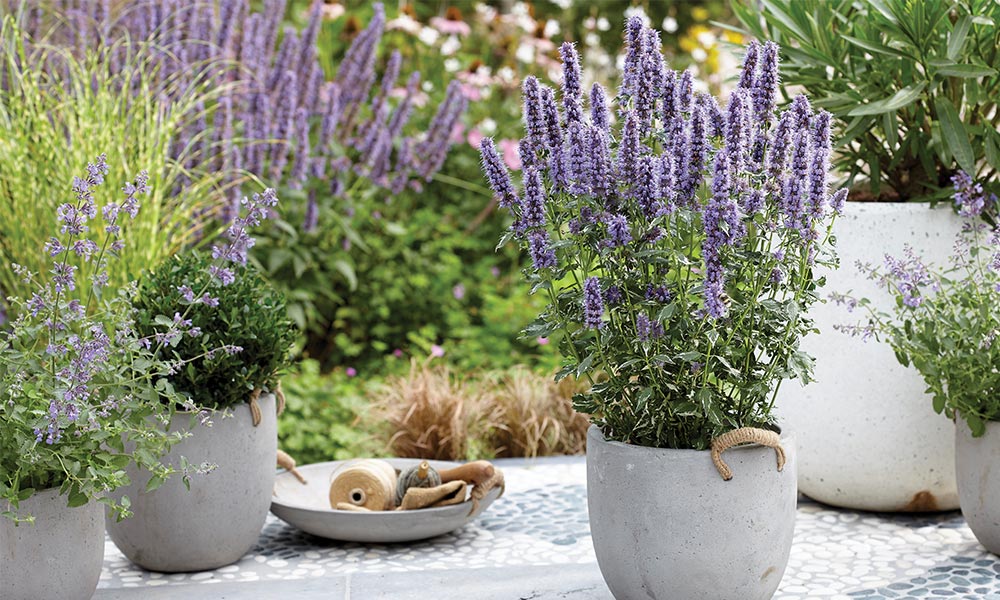
Mix green, leafy pots with bright, flowering perennials like our Agastache mixed collection, then add seasonal interest, for example a springtime display of tulips, hellebores and primroses and a lovely cobalt-blue grape hyacinth. Large potted trees including apple, Japanese maple or flowering Dogwood varieties also give extra ‘va-va-voom’ and their height will lift to your garden by sending the eye upwards.
If there is a lack of direct sunlight, then you will need to think more carefully about the plants you are selecting. However, even if wall to wall flowering plants aren’t an option, you can still create a wonderfully glossy, green haven. Ferns, in particular, love dark spaces, and they are also good choices for vertical planters. A huge variety of ferns are available, so have a look at some of our special choices like the Dicksonia antarctica or Polystichum munitum. Without bright flowers for visual contrast, focus on texture, shape and tone, for example, a spiky Phormium tenax makes a great companion for a Hosta, while a fat leafed Colocasia or one of the many varieties of bamboo will happily fill corner space as well as fleshing out your greenery with texture. Heuchera and Brunnera varieties are also great additions, introducing mixed shades of foilage that break up the greens in a shady garden. Equally, a variety of plant like Lysimachia Alexander will offer lovely tall stems of gold flowers even in shady spots making a great floral accent to your planting.
When planning your courtyard, think about ways to avoid a one level display of pots, and instead, create a space that encourages your eyes to explore. Hanging baskets, either mixed displays or trailing plants like lobelias or million bells will not only raise your eyeline - they also enlarge the space your garden occupies. Wisteria, rambling roses and other potted climbers can be encouraged across walls, trellises or over pergolas, offering a solid fill of colour behind your other plants. Vertical plant hangers are also worth considering; there are an immense variety available these days, allowing you to turn smaller plants into a feature. You can also do some environmentally beneficial recycling – an old wooden stepladder can make a fascinating plant display. You could even borrow from the creativity recently seen at RHS Wisley and recycle spent furniture to make unusual and quirky displays.
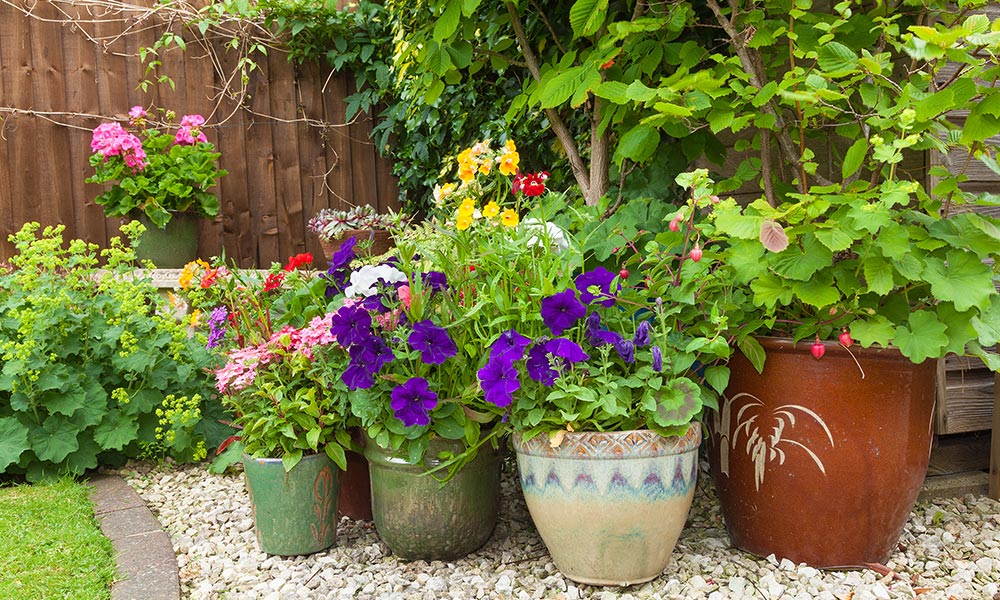

Pots and containers allow your inner interior designer some freedom and give an opportunity to express your personality. Lovers of terracotta pots can give their spaces a Mediterranean vibe, and supporters of minimalist interiors can let their creativity flow into the courtyard by confining containers to a single colour or style. In contrast to this, a mishmash of different coloured pots can shoot brighter shades into a darker, shadier spaces where colour cannot be drawn from flowers. Even plastic pots don’t have to be boring these days and our black and copper Chengdu planter is a recycled plastic pot that really injects glamour for example.
Equally, unusual containers, such as watering cans, old barrels, buckets and even baths and sinks, are perfect for recycling as attention grabbing planters – just remember to add drainage holes in the bottom of them before you start planting or you could, inadvertently, end up with a bog garden or even a pond!
The existing structural elements in your courtyard are important too. Painting a bland brick wall can dramatically change the look of the space by reflecting light in with brighter colours, or making the boundaries disappear with darker colours. New or recycled tiles, bricks, pebbles or flagstones underfoot can add impact and pattern where needed and may encourage mosses and smaller hardy plants to grow. There are a multitude of hardy, fragrant ground cover plants to choose from - Corsican mint and creeping thyme have grown in popularity recently, and planting these between pavers or flagstones turns the area into a sensory delight. Consider adding ornamental landscaping to add a further creative flourish - water features, bird feeders, statues, and dare I say it, even garden gnomes are widely available and can add sophistication, sensuality or a bit of humour. Plan ahead as to where you are going to place items and remember that a couple of strong pieces will be far more beneficial than a host of bitty knick-knacks.
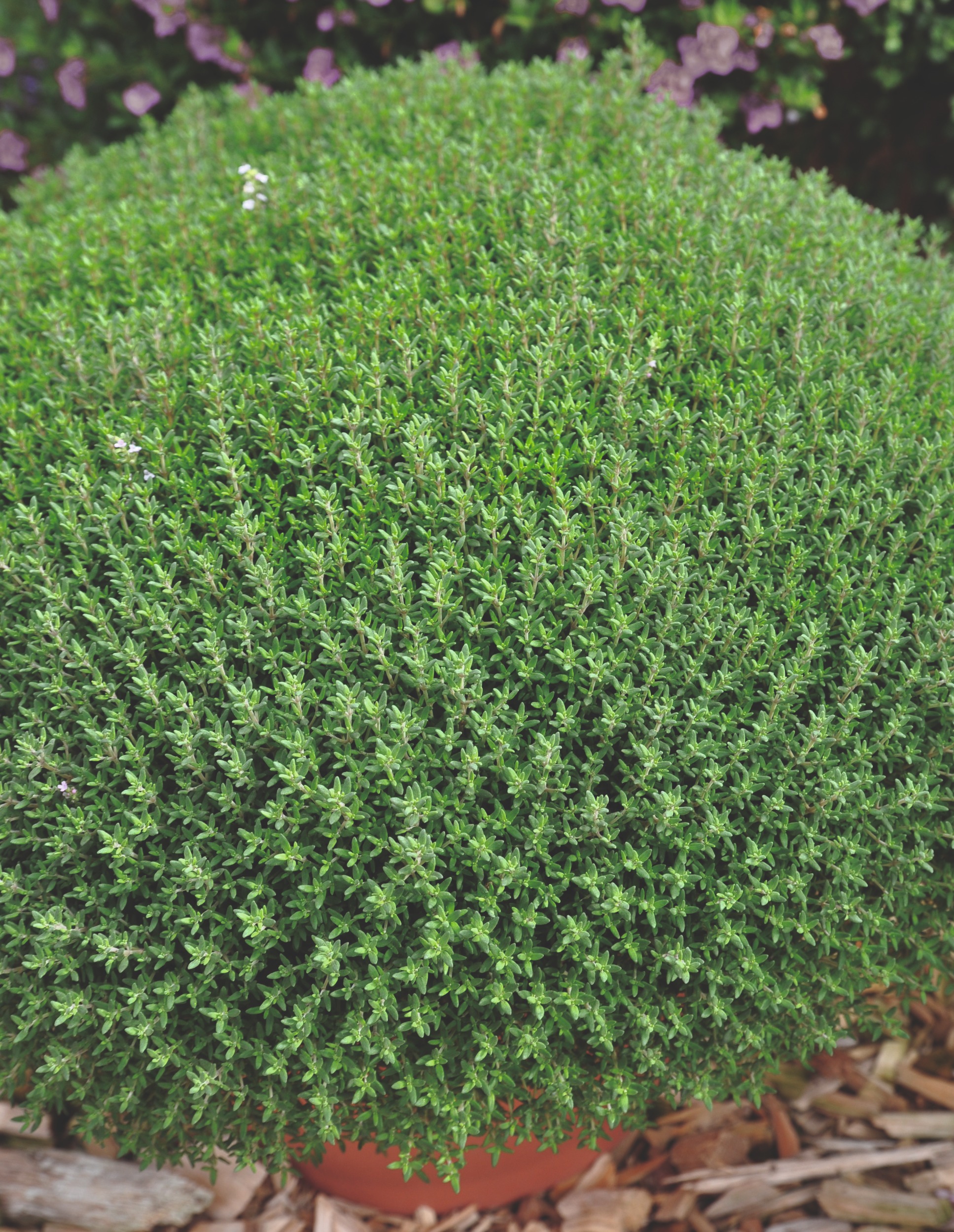
Bring the garden indoors
Even if you lack any outside space, pots can be used to turn an empty indoor space or entire conservatory into an impressive ‘garden’. Much like a courtyard garden, use stands, wall planters and hanging baskets to add depth and height to your arrangements and, on a practical note, make sure hanging baskets are going to be easy enough to reach when you are watering and will not splash water over treasured furniture and other delicate items.
Clustering multiple plants together in a corner can create the effect of a mini oasis and ‘green up’ interior spaces. Mix textures, tones and height to add to the impact. Palms, philodendrons, corn plants and peace lilies are always reliable indoors, while unusual plants like our Corokia Maori Silver Leaf will add drama and make a fabulous feature as a stand-alone plant. If low maintenance is important to you, succulents and cacti should be your first port of call and there are plenty of varieties to choose from. Among the succulents, Aloe Vera, Rhipsalis and Aeonium offer a range of contrasting textures and shapes. Furthermore, there are around 2000 different species of Cactii; so, there are a myriad of possibilities out there.
Indoor gardens don’t have to be flower-free either. Orchids, for example, come in hundreds of varieties, and potted azaleas do well in a sunny spot. Certain bulbs, like our lovely flax blue, Muscari armeniacum Blue Spike, will flower indoors as will Hyacinth (with the benefit of delicate perfume to fill a room).
If a vegetable garden is what you really hanker for, then do not let a lack of outside space put you off. Even vegetables can be grown easily indoors, and tomatoes, chilies and mini cucumber are all good choices for indoor growing. All you need is a sunny windowsill!
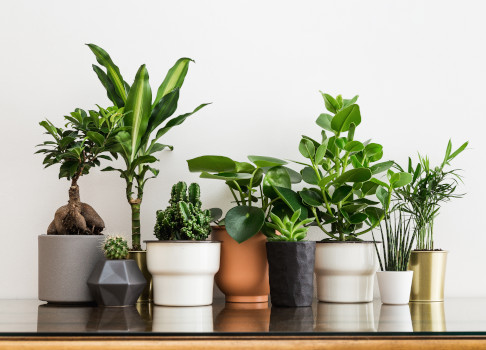
Windowsills, window boxes and balconies
Windowsill gardens or window boxes allow you to be creative on a smaller scale and, as an added bonus, you can re-invent them every season. If you are a casual gardener, then choose long flowering plants like pelargoniums that will give you a long display for minimum effort. In the same manner, a kitchen window box of nasturtiums makes a pretty feature. Pelargoniums are quick to grow and offer a mass of blooms through summer and autumn, Nasturtiums are a fun and easy plant to grow, and the edible flowers and leaves are fantastic addition to salads.

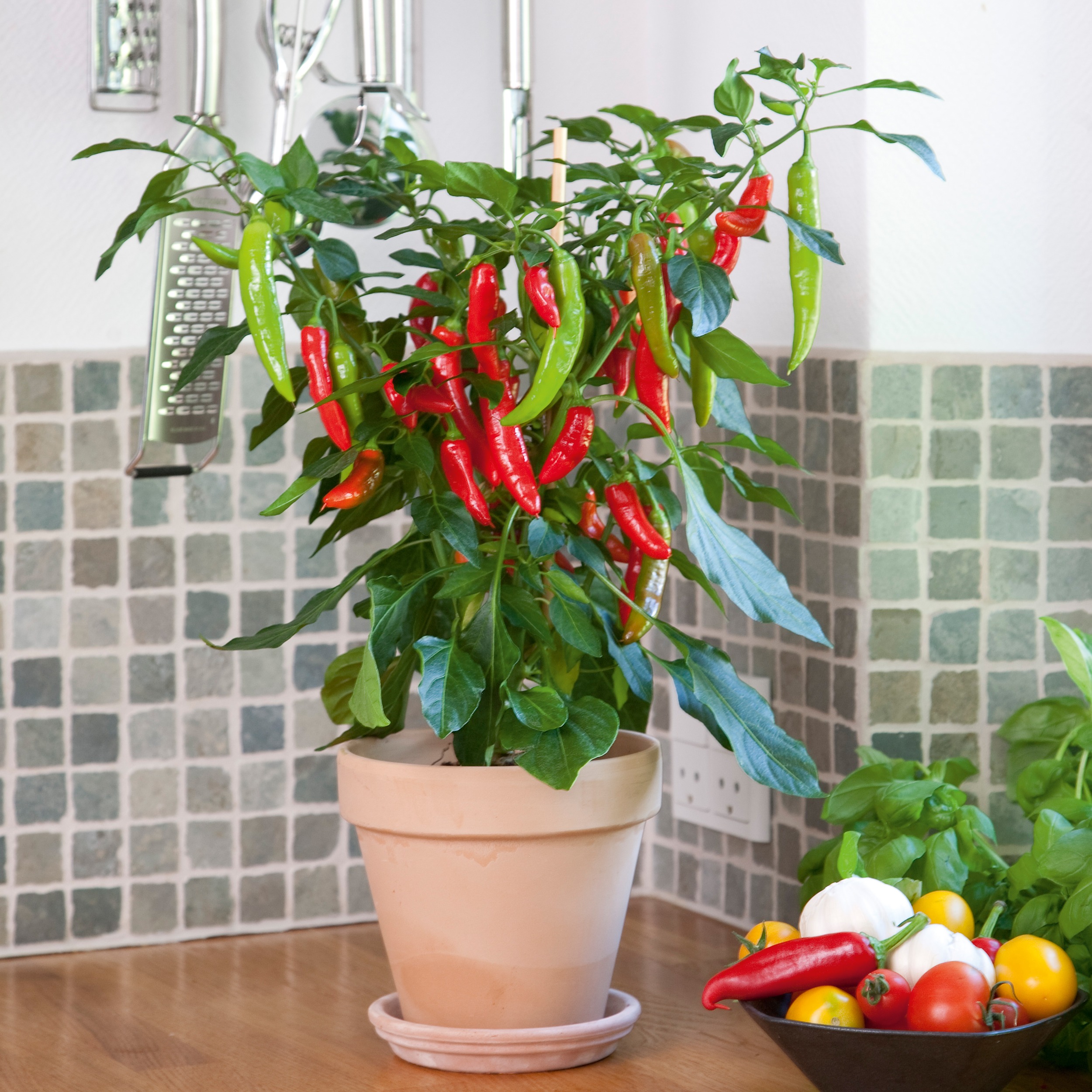
As mentioned previously, Chilli plants love a windowsill with lots of sun, and the red chillies add a burst of vibrant colour to the room. There are a host of varieties to choose from – just remember to look at the strength of the mature chilli if your intention is to cook with them!
Herbs are a window box favourite, and chives, rosemary, mint and sage or a well fed and watered strawberry plant will flourish in this setting. If you want to be more adventurous, then mix up a variety of plants to produce your own mini cottage garden. It is also a good idea to shop around if you are investing in a new window box as there is an extensive selection on the market with many different colours and designs.
When gardening on a small balcony, think about ways to raise pots so that you save the limited floorspace. Hanging gardens and baskets are great for balcony gardens and encouraging a potted climber up the railings can change the whole look of the space. Fruit and vegetable enthusiasts will also find that tomatoes and strawberries will grow very happily in hanging baskets.
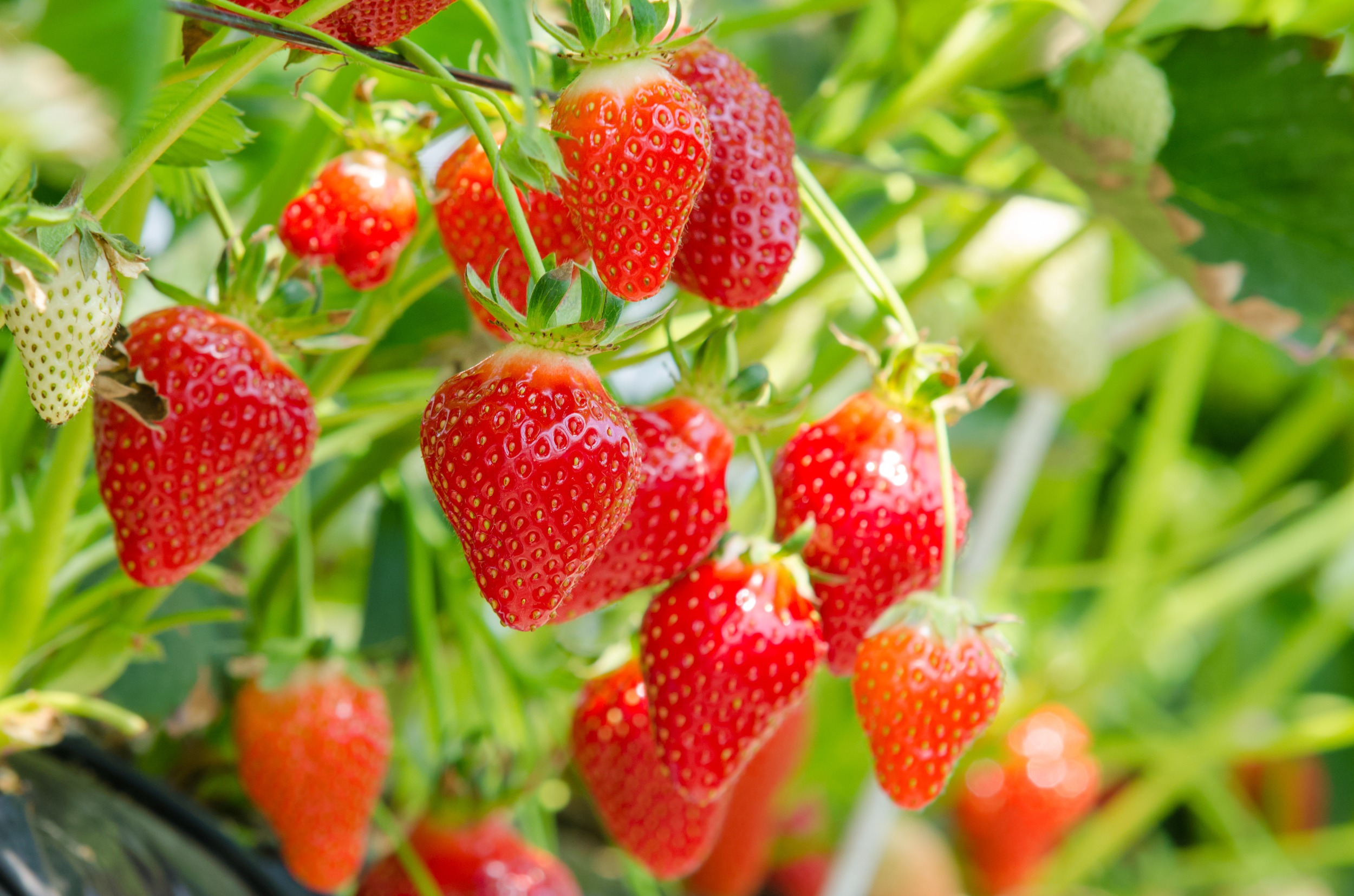
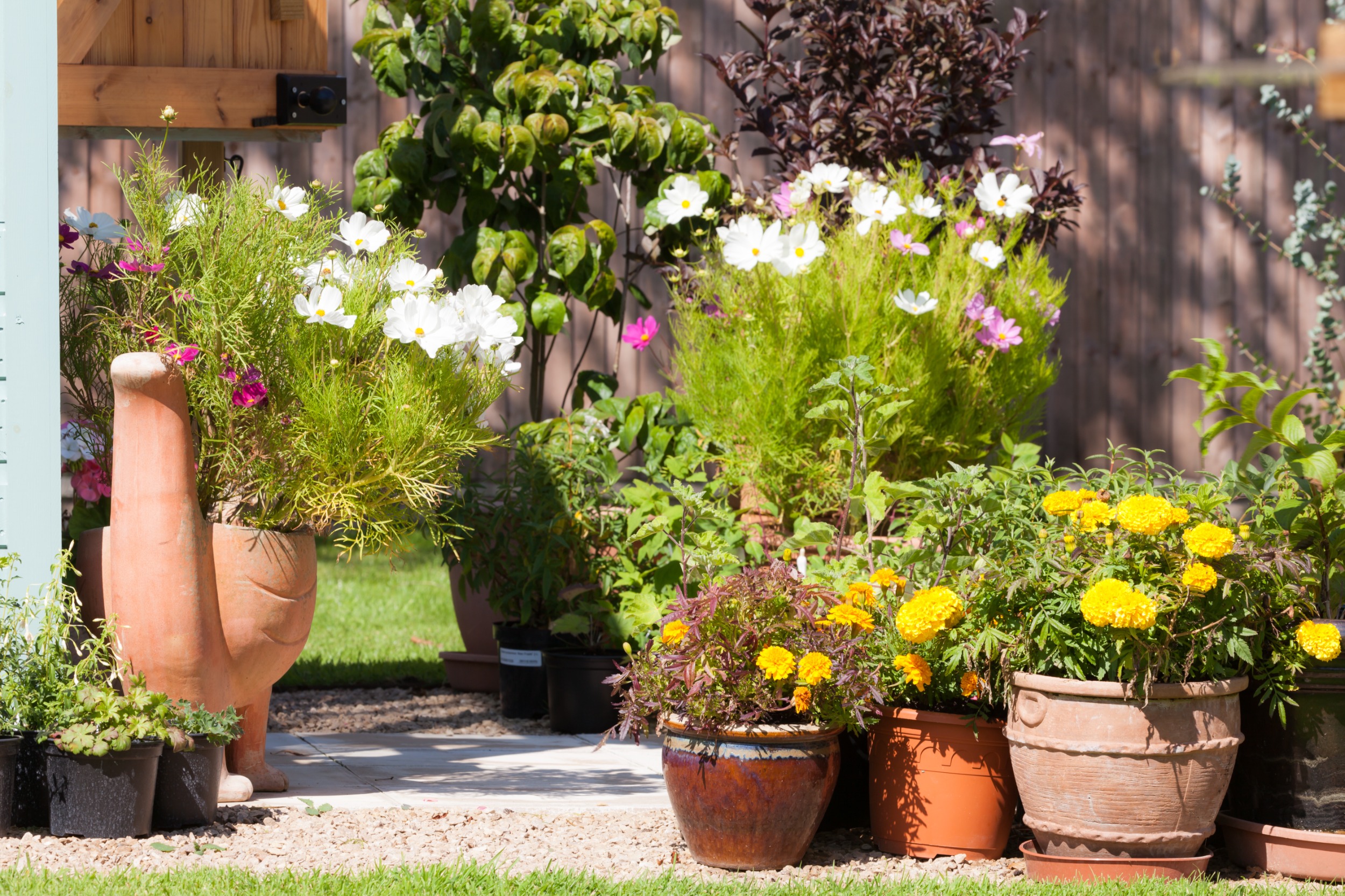
No matter how small your space, a little patience, perseverance, and a dollop of creativity can result in a truly amazing garden. Most importantly, choose suitable plants for the environment in which you are planting then play around with how you arrange them so that you get maximum visual impact. One of the most wonderful things about a potted garden is that you can re-arrange it as many times as you like until it is ‘just right’!





